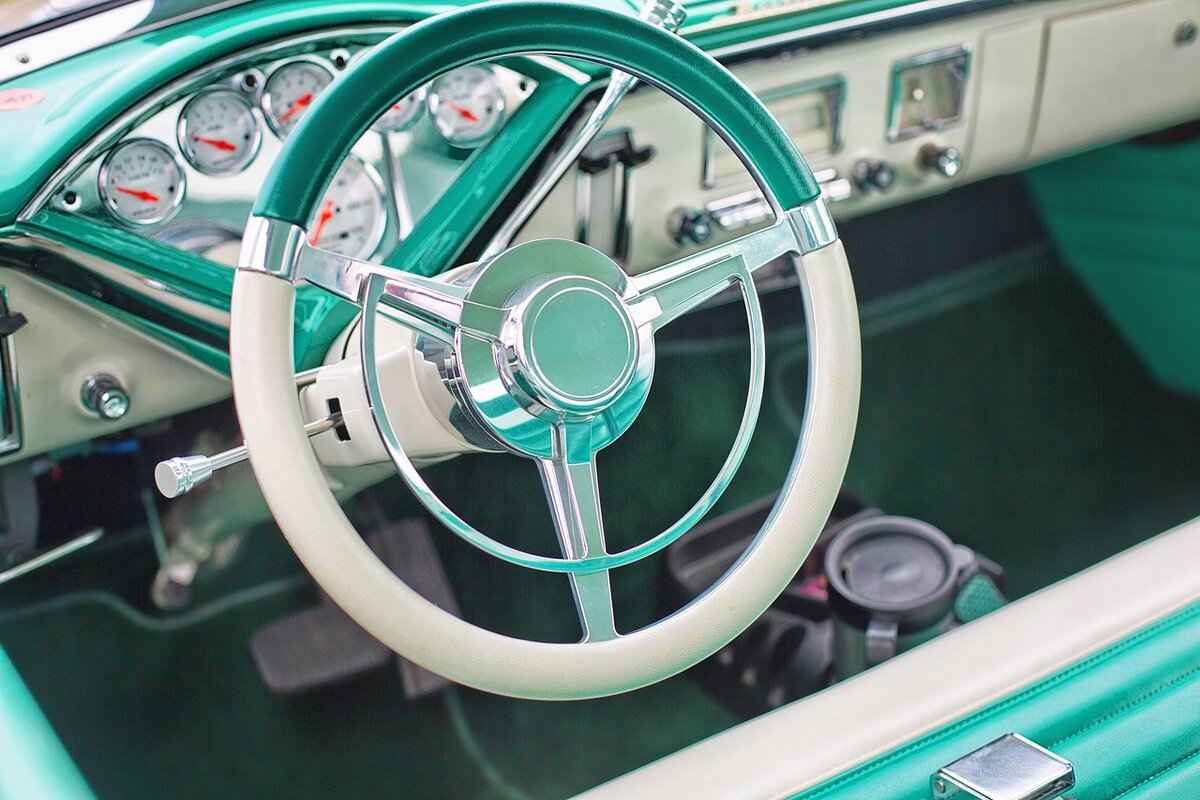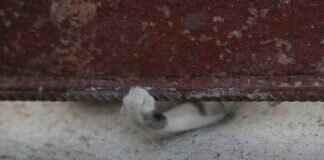This article provides effective methods and tips for removing water spots from your car’s surface without causing scratches, ensuring your vehicle looks its best.
What Causes Water Spots on Cars?
Understanding the origins of water spots is crucial to prevent them. Water spots are primarily caused by hard water, which contains high levels of minerals such as calcium and magnesium. When water evaporates, these minerals are left behind, creating unsightly marks on your vehicle’s finish. Other common causes include rain, which can carry pollutants, and sprinkler systems that deposit mineral-laden water on your car. Recognizing these factors can help you take proactive measures to minimize water spots.
Why Is It Important to Remove Water Spots?
Removing water spots is essential not just for aesthetics but also for maintaining your car’s paint integrity. Prolonged exposure to these spots can lead to etching and permanent damage to the clear coat. This can result in costly repairs down the line. Regularly addressing water spots not only keeps your car looking pristine but also helps preserve its value over time.
Essential Tools for Cleaning Water Spots
Having the right tools makes the cleaning process easier and more effective. Key items include:
- Microfiber cloths – These are gentle on surfaces and help prevent scratches.
- Detailing sprays – Formulated to remove contaminants without damaging the paint.
- Soft brushes – Ideal for reaching tight spots without scratching the surface.
Step-by-Step Guide to Removing Water Spots
Following a systematic approach can yield the best results. Here’s a step-by-step method for effectively removing water spots:
- Wash your car to remove loose dirt and debris.
- Apply a detailing spray or your chosen cleaning solution.
- Gently wipe the area with a microfiber cloth in a circular motion.
- Rinse with clean water and dry thoroughly.
Using Vinegar to Remove Water Spots
Vinegar is a popular household item known for its effectiveness in removing water spots. It works due to its acidity, which helps dissolve mineral deposits.
Mixing the Vinegar Solution
Creating the right vinegar solution is key to effective cleaning. A mix of equal parts vinegar and water is often recommended for safe application. This dilution helps to ensure that the acidity is strong enough to break down the spots without damaging the paint.
Application Techniques
How you apply the vinegar solution can affect the outcome. Use a microfiber cloth to gently apply the solution, ensuring you do not rub too hard, as this can cause scratches. Allow the solution to sit for a minute before wiping it away with a clean cloth.
Commercial Products for Water Spot Removal
Numerous commercial products are designed specifically for removing water spots. These products often contain specially formulated ingredients that target mineral deposits effectively.
Top-Rated Water Spot Removers
Exploring top-rated products can help you choose the best solution for your needs. Brands like Meguiar’s and Chemical Guys offer highly rated options that users find effective in removing water spots without damaging the paint.
How to Use Commercial Products Safely
Using commercial products requires following specific instructions to avoid damage. Always read the label and perform a spot test in an inconspicuous area first. Apply the product with a microfiber cloth and follow the manufacturer’s recommendations for best results.
Preventing Future Water Spots
Taking proactive measures can help prevent water spots from forming in the first place. Regular maintenance is key.
Regular Washing and Waxing
Establishing a regular washing and waxing routine can protect your car’s surface. Wax creates a barrier that helps to repel water and contaminants, making it less likely for spots to form.
Choosing the Right Parking Location
Where you park can influence the likelihood of water spots forming. Parking in covered or shaded areas minimizes exposure to rain and sprinklers, significantly reducing the chances of water spots developing on your vehicle.
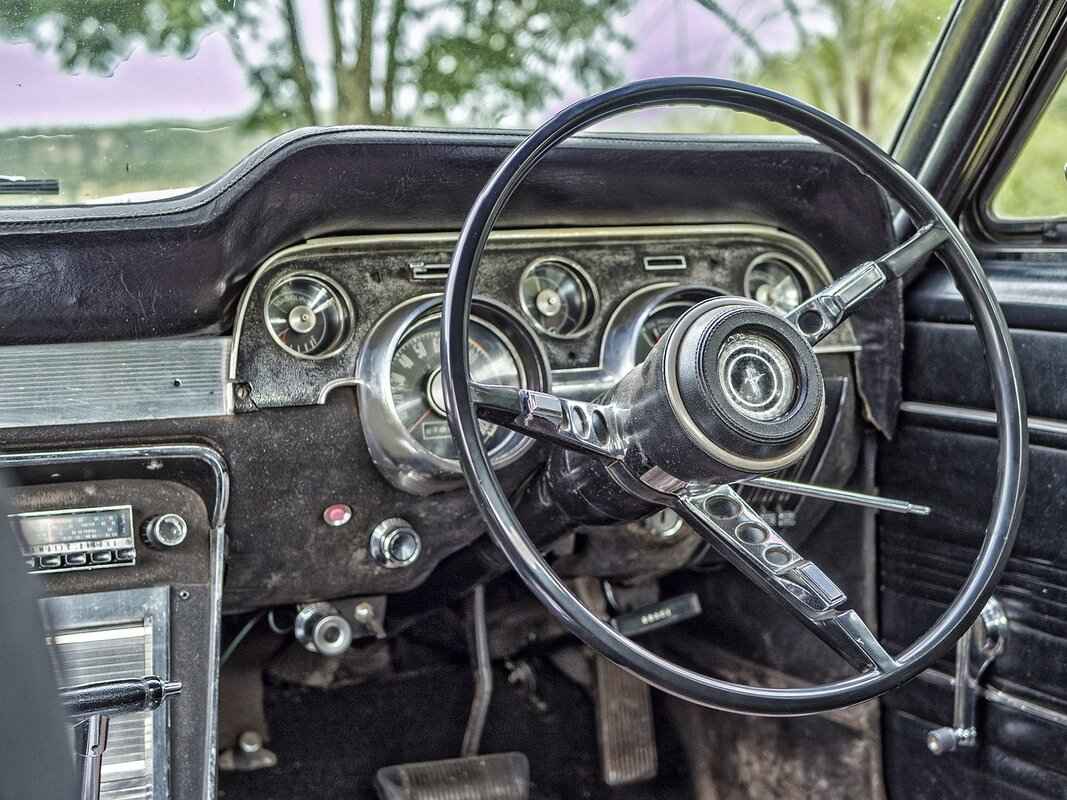
What Causes Water Spots on Cars?
Understanding the origins of water spots is crucial for effective prevention and removal. Water spots are unsightly marks that can mar the appearance of your vehicle, detracting from its overall aesthetic appeal. They typically arise from various sources, and identifying these causes can help you take proactive measures to keep your car looking pristine.
- Hard Water: One of the most common culprits behind water spots is hard water. This type of water contains a high concentration of minerals, particularly calcium and magnesium. When hard water evaporates, it leaves behind these mineral deposits, which can cling to your car’s surface and form noticeable spots.
- Rain: While rain is a natural occurrence, it can also contribute to water spots. Rainwater often contains dissolved minerals and pollutants from the atmosphere. When it falls on your car and subsequently evaporates, it can leave behind marks that are difficult to remove.
- Sprinklers: If you park your car near sprinkler systems, you may notice water spots forming as a result of exposure to sprinkler water. Similar to hard water, sprinkler water can contain various minerals and chemicals that can leave deposits on your car’s surface.
- Mineral Deposits: Besides hard water and rain, other sources of mineral deposits can include washing your car with tap water, especially if you live in an area with high mineral content. Even using certain car wash products can inadvertently lead to water spots if they do not rinse cleanly.
- Environmental Factors: Pollution and environmental contaminants can also contribute to water spots. Dust, dirt, and other particles can mix with water and create a slurry that leaves behind marks when it dries. Additionally, bird droppings and tree sap can exacerbate the problem, leading to more stubborn stains.
To effectively manage and prevent water spots, it is essential to recognize these common causes and take appropriate steps. Regularly washing your car with distilled water, using protective wax, and parking in shaded areas can significantly reduce the likelihood of water spots forming. By being proactive, you can maintain your car’s finish and keep it looking its best.
In summary, understanding the various factors that contribute to water spots can empower car owners to take preventative measures. By addressing these issues, you can protect your vehicle’s appearance and value over time.
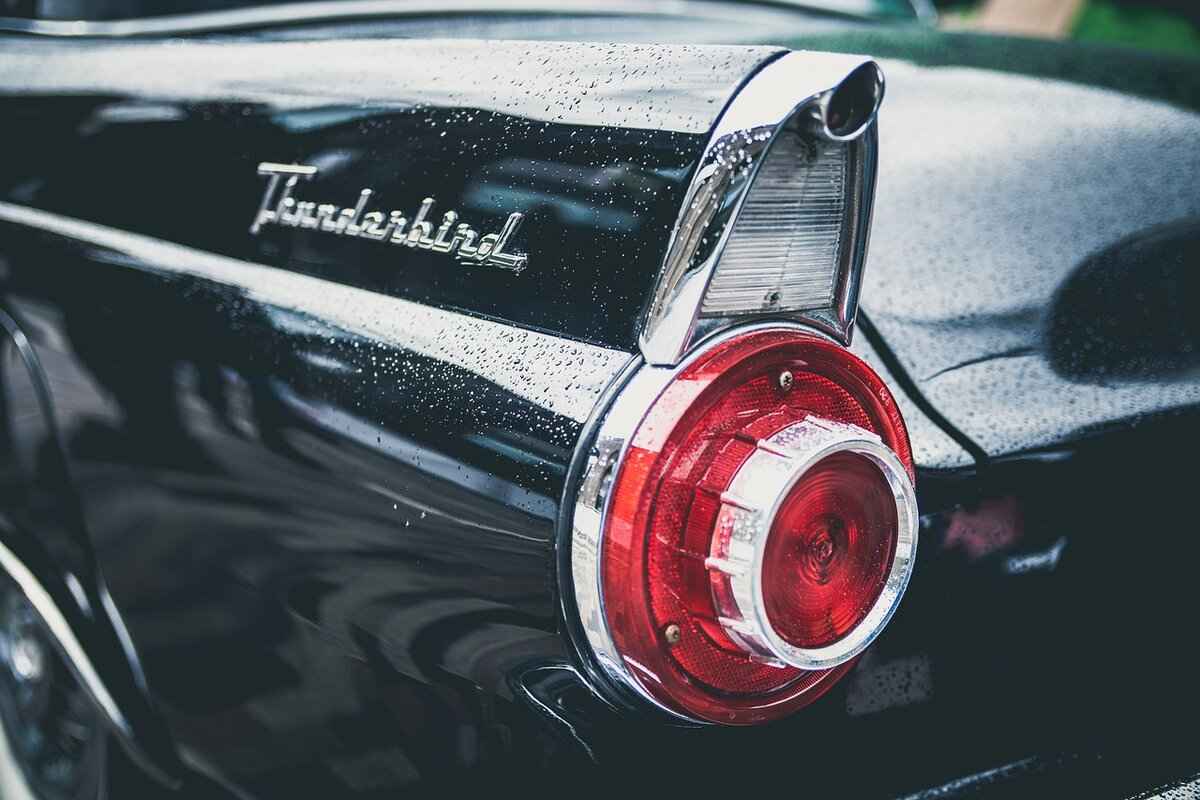
Why Is It Important to Remove Water Spots?
Water spots can be a common nuisance for car owners, often appearing as unsightly marks that detract from the vehicle’s overall appearance. However, the significance of removing these spots extends far beyond mere aesthetics. In this section, we will delve into why it is crucial to remove water spots from your car, exploring the potential consequences of neglecting this task and the benefits of maintaining your vehicle’s exterior.
Water spots are typically caused by mineral deposits left behind after water evaporates. When these minerals settle on the paint surface, they can lead to etching if not addressed promptly. Over time, this etching can become permanent, resulting in damage that is not only unsightly but also costly to repair. By ignoring water spots, you risk:
- Decreased Resale Value: A vehicle with noticeable water spots may appear poorly maintained, which can significantly lower its resale value.
- Increased Repair Costs: Prolonged exposure to water spots can lead to paint damage that may require professional detailing or repainting, both of which can be expensive.
- Compromised Paint Integrity: Water spots can weaken the clear coat, making the paint more susceptible to scratches, fading, and other forms of damage.
Beyond the practical implications, removing water spots enhances the overall look of your car. A clean, well-maintained exterior reflects a sense of pride in ownership. Regularly cleaning your vehicle not only improves its appearance but also provides a sense of satisfaction and enjoyment when driving. A few aesthetic benefits include:
- Enhanced Shine: Removing water spots restores the vehicle’s shine, making it look newer and more appealing.
- Improved Visibility: A clean windshield and windows free from water spots ensure better visibility while driving, contributing to safety.
- Positive Impression: A well-kept car creates a positive impression on others, whether you are at a car show or simply parked in your driveway.
Addressing water spots promptly is an integral part of your car’s long-term maintenance. By establishing a routine cleaning schedule, you can prevent the formation of water spots and protect your vehicle’s paint. This proactive approach not only saves you time and money in the long run but also keeps your car looking its best. Consider the following maintenance tips:
- Regular Washing: Wash your car regularly to remove any contaminants that could lead to water spots.
- Waxing: Applying a high-quality wax provides a protective layer that can help repel water and prevent mineral deposits from adhering to the paint.
- Use of Water-Repellent Products: Consider using water-repellent treatments that can help reduce the formation of water spots.
In summary, removing water spots is essential not only for maintaining the aesthetic appeal of your car but also for preserving its paint integrity and ensuring long-term value. By understanding the risks associated with neglecting water spots and implementing a regular maintenance routine, you can keep your vehicle looking pristine and protect your investment.

Essential Tools for Cleaning Water Spots
Cleaning water spots from your car can be a daunting task, but having the right tools at your disposal can make the process significantly easier and more effective. Water spots are often caused by mineral deposits left by hard water, and using the appropriate cleaning tools can help prevent scratches while ensuring a thorough clean. Here, we will explore the essential tools you need to tackle those stubborn water spots.
- Microfiber Cloths: These are a must-have for any car cleaning kit. Microfiber cloths are gentle on surfaces and highly absorbent, which makes them ideal for wiping away water spots without scratching the paint. Their fine fibers trap dirt and grime, reducing the risk of surface damage.
- Detailing Sprays: A good detailing spray can help break down the mineral deposits that cause water spots. Look for a product that is safe for automotive paint and designed specifically for spot removal. These sprays often contain lubricants that help lift dirt and grime without scratching the surface.
- Soft Brushes: For areas where water spots may be more stubborn, such as around emblems or in crevices, a soft brush can be invaluable. Choose a brush with soft bristles to avoid scratching the paint while effectively dislodging debris.
- Clay Bars: If water spots persist after using cloths and sprays, a clay bar can provide a deeper clean. Clay bars work by removing contaminants that are bonded to the paint surface. They are safe to use and can leave your car’s finish feeling smooth and looking shiny.
- Bucket and Water: Always start your cleaning process with a thorough wash using a bucket of water and a gentle car soap. This initial step helps remove any loose dirt that could scratch the paint when you start working on the water spots.
- Protective Gloves: To protect your hands from harsh chemicals in cleaning products, wearing protective gloves is advisable. This will also help you maintain a better grip on your tools while cleaning.
Each of these tools plays a crucial role in the cleaning process. By investing in quality items, you can ensure that your efforts to remove water spots are effective and safe for your car’s surface. Not only will this enhance the appearance of your vehicle, but it will also help maintain its value over time.
In summary, having the right tools is fundamental when it comes to cleaning water spots on your car. Microfiber cloths, detailing sprays, soft brushes, clay bars, and other essential items will make the task easier and more efficient. By utilizing these tools, you can keep your car looking pristine and protect its finish from damage.
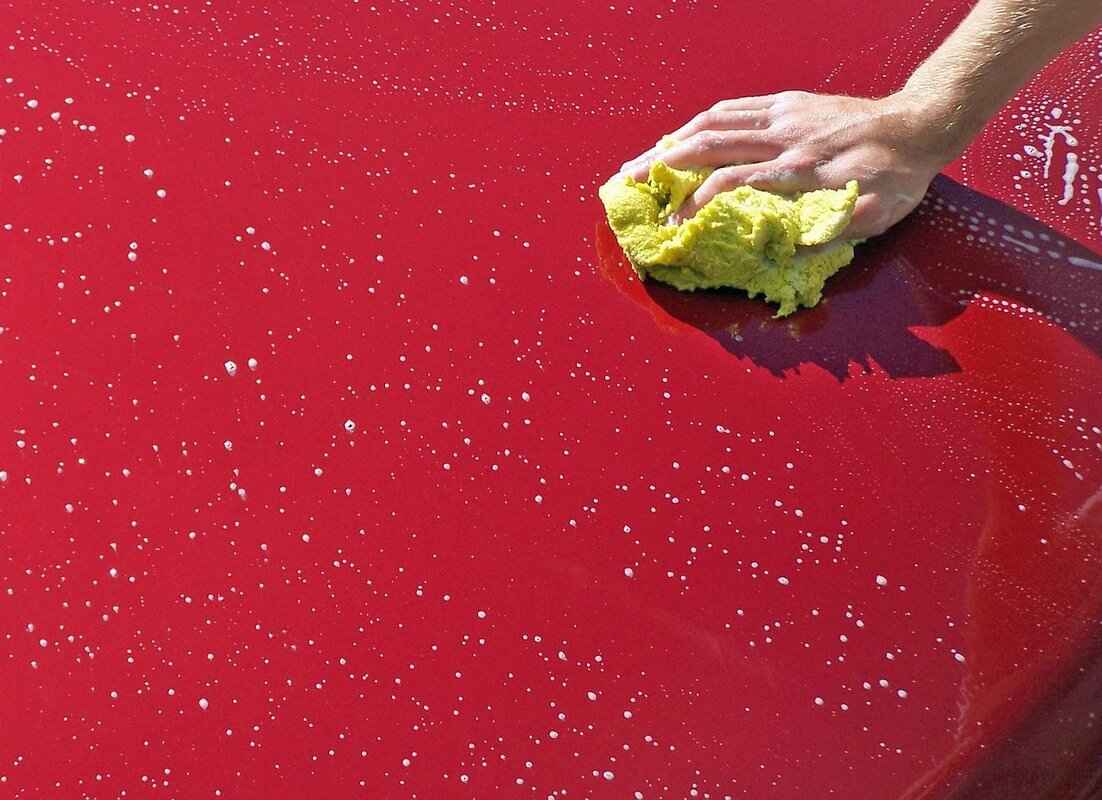
Step-by-Step Guide to Removing Water Spots
Water spots on your car can be an annoying eyesore, but with a systematic approach, you can effectively remove them without causing scratches. This guide outlines a clear, step-by-step method to ensure your vehicle’s surface remains pristine.
1. Gather Your Supplies
- Microfiber cloths
- pH-balanced car wash soap
- Soft sponge or wash mitt
- Vinegar or a commercial water spot remover
- Bucket
- Water hose or pressure washer
2. Prepare Your Vehicle
Before starting the cleaning process, it’s essential to prepare your vehicle. Begin by washing your car thoroughly with a pH-balanced car wash soap to remove any loose dirt and debris. This step is crucial, as leftover particles can lead to scratches during the spot removal process.
3. Inspect the Surface
After washing, inspect the surface of your car. Identify the areas with water spots and assess the severity. Knowing the extent of the problem will help you choose the right cleaning solution and method.
4. Choose Your Cleaning Solution
For effective water spot removal, you can use either a diluted vinegar solution (equal parts vinegar and water) or a commercial water spot remover. If you opt for vinegar, ensure it is mixed well to avoid any potential damage to your car’s paint.
5. Application Technique
Using a microfiber cloth, gently apply your chosen cleaning solution to the affected areas. It’s important to use a light touch and avoid scrubbing too hard, as this can lead to scratches. Instead, use a circular motion to lift the mineral deposits off the surface.
6. Rinse Thoroughly
Once you’ve applied the cleaning solution, rinse the area thoroughly with clean water to remove any residue. This step is crucial to prevent any leftover cleaning agents from causing further damage to your paint.
7. Dry the Surface
After rinsing, dry the car with a clean, dry microfiber cloth. This will help prevent new water spots from forming as the water evaporates. Be sure to dry the car completely, especially in crevices where water can linger.
8. Inspect and Repeat if Necessary
After drying, inspect the car again. If any water spots remain, repeat the cleaning process. It may take a couple of attempts to completely remove stubborn spots, but patience is key.
9. Protect Your Car
Once all water spots are removed, consider applying a coat of wax or sealant to protect your car’s paint from future water spots and mineral deposits. Regular waxing creates a barrier that makes cleaning easier and helps maintain your car’s shine.
By following this step-by-step guide, you can effectively remove water spots from your car without scratching the surface. Regular maintenance and proper cleaning techniques will keep your vehicle looking its best.
Preparation Before Cleaning
Preparing your car for cleaning is vital to ensure a successful and scratch-free detailing process. Proper preparation not only enhances the effectiveness of the cleaning but also protects the vehicle’s paintwork. Here’s a comprehensive guide on how to prepare your car before cleaning, focusing on the essential steps to take.
- Start with a Thorough Wash: Begin by washing your car to remove any loose dirt, grime, and debris. Use a high-quality car wash soap and a soft sponge or wash mitt to avoid scratching the surface. Rinse the car thoroughly with clean water to ensure that no soap residue remains.
- Dry the Surface: After rinsing, dry the car using a microfiber towel or chamois. This step is crucial as it prevents water spots from forming as the water evaporates. Make sure to dry the car completely, paying special attention to crevices and areas where water tends to accumulate.
- Inspect the Surface: Once the car is dry, inspect the surface for any remaining contaminants, such as tree sap, bird droppings, or tar. These substances can be harmful to your car’s paint if left untreated. Use a clay bar or a specialized cleaner to remove these tough spots safely.
- Choose the Right Location: Select a shaded area or a garage for cleaning your car. Direct sunlight can cause cleaning solutions to dry too quickly, leading to streaks or spots. A cool environment allows for better application of cleaning products.
- Gather Your Supplies: Before starting the cleaning process, gather all necessary supplies. This includes microfiber cloths, a bucket, a soft-bristle brush, and your chosen cleaning products. Having everything at hand will streamline the process and reduce the risk of scratching.
- Wear Protective Gear: Consider wearing gloves and protective eyewear when handling cleaning chemicals. This ensures your safety and prevents any skin irritation or damage to your eyes.
By following these preparation steps, you can significantly reduce the risk of scratches during the cleaning process. Proper preparation is the foundation for achieving a spotless, gleaming finish on your vehicle.
Choosing the Right Cleaning Solution
Selecting an appropriate cleaning solution can significantly impact the effectiveness of water spot removal from your vehicle. The right product not only ensures that the water spots are effectively eliminated but also protects your car’s paintwork from potential damage. Here are some key points to consider when choosing the right cleaning solution:
- Commercial Products: There are numerous commercial products specifically designed for removing water spots. These products often contain specialized ingredients that target mineral deposits and grime. Popular choices include:
- Water Spot Remover Spray: These sprays are easy to apply and are formulated to break down mineral deposits without scratching the surface.
- Detailing Clay: A clay bar can be used in conjunction with a lubricant to remove embedded contaminants, including water spots.
- pH-Balanced Car Wash Soap: Using a pH-balanced soap can help prevent water spots from forming during the washing process.
- Homemade Remedies: If you prefer a more natural approach, several homemade solutions can effectively tackle water spots. Common ingredients include:
- Vinegar: This household staple is known for its effectiveness in dissolving mineral deposits. A mixture of equal parts vinegar and water can be applied to the affected areas.
- Baking Soda Paste: Combining baking soda with water creates a gentle abrasive paste that can help lift stubborn stains without scratching the surface.
- Olive Oil: While not a cleaning agent per se, olive oil can be used after cleaning to add shine and provide a protective layer against future spots.
- Considerations for Selection: When choosing a cleaning solution, consider the following:
- Paint Type: Ensure that the product is safe for your specific type of car paint. Some products may be too harsh for certain finishes.
- Effectiveness: Look for reviews or testimonials that speak to the effectiveness of the product in removing water spots.
- Ease of Use: Choose a solution that fits your cleaning routine and is easy to apply.
In summary, whether you opt for a commercial product or a homemade remedy, the right cleaning solution can make all the difference in effectively removing water spots from your car. Always test a small area first to ensure compatibility with your vehicle’s finish, and follow the manufacturer’s guidelines for the best results. With the right approach, you can maintain your car’s appearance and protect its paintwork from damage caused by stubborn water spots.
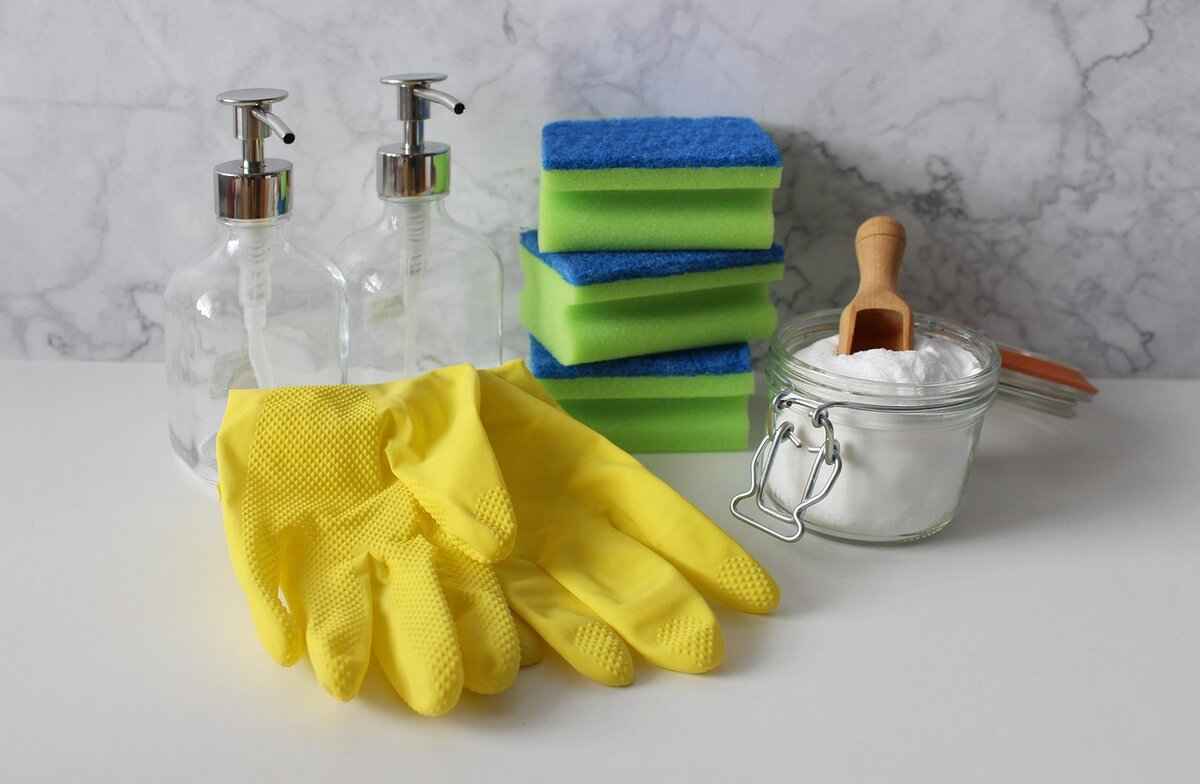
Using Vinegar to Remove Water Spots
When it comes to maintaining the appearance of your vehicle, water spots can be a major concern. These unsightly marks not only detract from your car’s shine but can also lead to more serious damage if left untreated. One effective and affordable solution that many car owners turn to is vinegar. In this section, we will explore how to use vinegar safely to remove water spots without damaging your car’s paint.
Vinegar is a natural acid, primarily composed of acetic acid, which helps dissolve mineral deposits that cause water spots. Its effectiveness, combined with its non-toxic nature, makes it an appealing choice for many car enthusiasts. Additionally, vinegar is widely available and inexpensive, making it a convenient option for regular cleaning.
To create an effective cleaning solution, mix equal parts of vinegar and water in a spray bottle. This dilution is crucial as it ensures that the vinegar is strong enough to tackle the spots without being so potent that it damages the paint. Here’s a simple recipe:
- 1 cup of vinegar
- 1 cup of water
Shake the mixture well before use to ensure it is thoroughly combined.
When applying the vinegar solution, it is essential to use a microfiber cloth to avoid scratching the paint. Here’s a step-by-step guide to ensure effective application:
- Wash your car thoroughly to remove any loose dirt or debris.
- Spray the vinegar solution directly onto the affected areas, ensuring even coverage.
- Let it sit for a few minutes to allow the solution to penetrate the mineral deposits.
- Gently wipe the area with a microfiber cloth in a circular motion.
- Rinse the area with clean water to remove any vinegar residue.
While vinegar is a safe and effective cleaning agent, there are some precautions to take:
- Avoid direct sunlight: Always clean your car in a shaded area to prevent the solution from drying too quickly, which can leave streaks.
- Test first: Before applying the solution to the entire area, test it on a small, inconspicuous spot to ensure it does not affect the paint.
- Do not let it sit too long: Prolonged exposure to vinegar can lead to damage, so always rinse promptly.
If water spots persist despite your best efforts with vinegar, it may be time to consult a professional. Some spots may be too stubborn or have caused etching in the paint, requiring specialized products or techniques to remedy. Regular maintenance and prompt action can significantly reduce the need for professional interventions.
In conclusion, vinegar is a versatile and effective solution for removing water spots from your car. By understanding how to mix, apply, and use vinegar safely, you can maintain your vehicle’s appearance without risking damage to its paint. Regular cleaning and preventive measures will keep your car looking its best for years to come.
Mixing the Vinegar Solution
When it comes to cleaning water spots from your car, mixing the right vinegar solution is essential for achieving effective results. Vinegar is a natural cleaning agent that is not only cost-effective but also safe for your vehicle’s surface when used correctly. This section will guide you through the process of creating the perfect vinegar solution to tackle those stubborn water spots.
To start, it’s important to choose the right type of vinegar. Typically, white distilled vinegar is recommended due to its high acidity, which helps break down mineral deposits. Avoid using flavored or colored vinegars, as these may leave unwanted residues on your car’s paint.
The most effective cleaning solution consists of equal parts vinegar and water. This 1:1 ratio ensures that the acidity of the vinegar is balanced, making it potent enough to dissolve water spots while being gentle on your car’s finish. For example, if you use 1 cup of vinegar, mix it with 1 cup of water.
- Step 1: Gather your materials. You will need white distilled vinegar, water, a measuring cup, and a spray bottle.
- Step 2: Measure equal parts of vinegar and water using the measuring cup.
- Step 3: Pour the vinegar and water into the spray bottle. Ensure the bottle is clean to avoid mixing any unwanted substances.
- Step 4: Shake the bottle gently to mix the ingredients thoroughly.
While vinegar is a safe cleaning agent, it’s crucial to take some precautions. Always test the solution on a small, inconspicuous area of your car first to ensure it does not affect the paint. Additionally, avoid applying the solution in direct sunlight, as it can cause the vinegar to dry too quickly, potentially leaving streaks.
If you have leftover vinegar solution, store it in a cool, dark place. Make sure to label the spray bottle clearly to avoid confusion with other cleaning products. The solution can last for several weeks, but it’s best to use it within a month for optimal effectiveness.
Creating the right vinegar solution is a straightforward process that can significantly enhance your car cleaning routine. By following the steps outlined above, you can effectively remove water spots while ensuring the safety of your vehicle’s finish. This simple yet powerful cleaning solution is an excellent addition to your car care arsenal.
Application Techniques
When it comes to removing water spots from your car, the method of application plays a crucial role in achieving a flawless finish. The way you apply the cleaning solution can significantly influence the outcome, so it’s essential to adopt the right techniques for effective and safe cleaning.
One of the best tools for this task is a microfiber cloth. Unlike traditional rags or sponges, microfiber cloths are designed to trap dirt and debris without scratching the car’s surface. Their fine fibers can easily lift away contaminants, making them ideal for applying vinegar solutions or any other cleaning agents.
To start, ensure that your car’s surface is cool to the touch. Applying any cleaning solution to a hot surface can lead to streaking or further damage. Once you’ve confirmed that the surface is cool, follow these steps:
- Prepare Your Solution: Mix equal parts of white vinegar and water in a spray bottle. This solution is effective in breaking down mineral deposits without harming the paint.
- Spray the Area: Lightly mist the affected area with your vinegar solution. Avoid saturating the surface; a gentle mist will suffice.
- Use Gentle Pressure: Take your microfiber cloth and gently wipe the area in a circular motion. This method helps to lift the water spots without scratching the paint. Applying too much pressure can cause micro-abrasions, leading to further damage.
- Rinse and Dry: After cleaning, rinse the area with clean water to remove any vinegar residue. Follow up by drying the surface with a clean, dry microfiber cloth to prevent new water spots from forming.
It’s also important to use a light touch when applying the solution. The goal is to lift the water spots, not to scrub them aggressively. If stubborn spots remain, consider repeating the process rather than applying excessive force, which could damage the clear coat.
Additionally, it’s advisable to work in small sections. This approach allows you to monitor your progress and ensures that the solution does not dry on the surface, which could lead to streaking. By focusing on one area at a time, you can achieve a more thorough and effective clean.
Lastly, remember to regularly wash and wax your car. This proactive maintenance can create a protective barrier against water spots and other contaminants, reducing the need for frequent cleaning.
By following these , you can effectively remove water spots from your car while keeping the paint surface intact. Always remember that gentle application with the right tools is key to maintaining your vehicle’s aesthetic appeal.
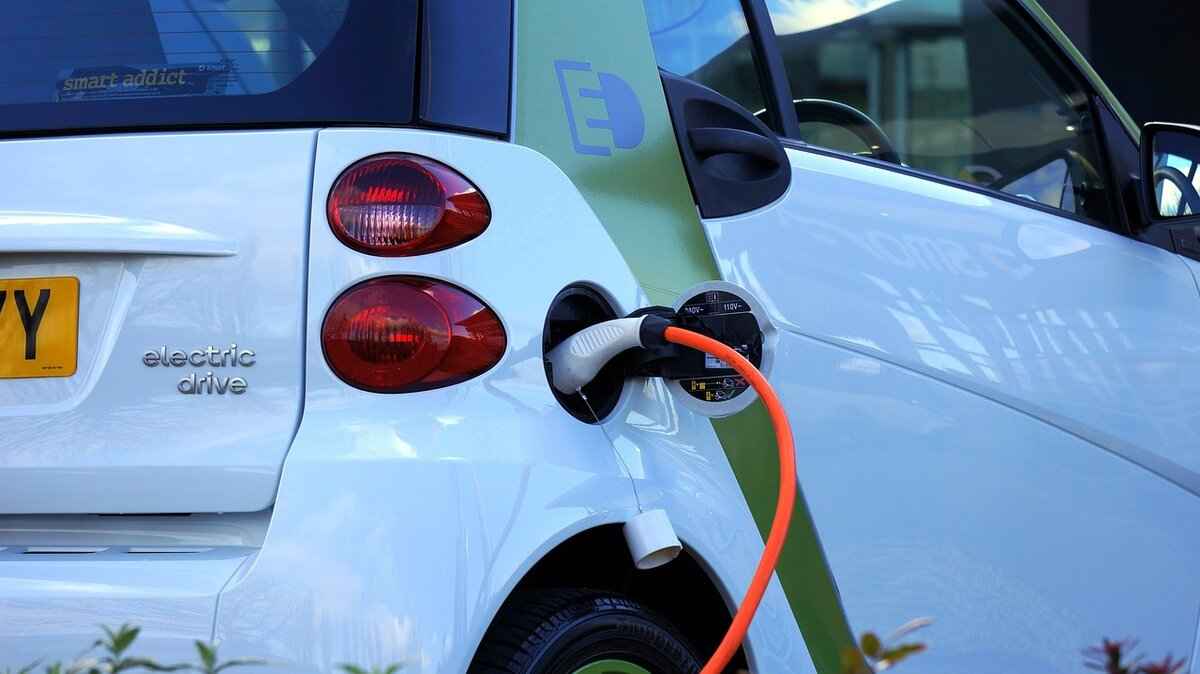
Commercial Products for Water Spot Removal
Water spots can be a persistent nuisance for car owners, often resulting from mineral deposits left behind by hard water or rain. Fortunately, numerous commercial products are specifically designed to tackle these unsightly marks. This section reviews some of the most effective options available on the market, helping you restore your vehicle’s shine without damaging its surface.
While homemade solutions like vinegar can be effective, commercial products often provide a targeted approach tailored for specific surfaces and conditions. Many of these products contain advanced formulas that not only remove water spots but also protect the paint from future damage. They are designed for ease of use and often come with clear instructions, making them a convenient choice for busy car owners.
- Meguiar’s Water Spot Remover: This product is well-known for its effectiveness in removing water spots and is safe for all painted surfaces. It contains a unique blend of chemicals that break down mineral deposits without scratching the paint.
- Chemical Guys Water Spot Remover: A favorite among detailers, this remover not only eliminates water spots but also adds a layer of protection. Its easy spray-on application makes it user-friendly.
- Griot’s Garage Water Spot Remover: This product is particularly effective on glass surfaces, making it ideal for windshields and mirrors. The formula is gentle yet powerful, ensuring a streak-free finish.
To maximize the effectiveness of these products while minimizing the risk of damage, follow these guidelines:
- Read Instructions: Always start by reading the manufacturer’s instructions carefully. Each product may have specific application techniques or safety precautions.
- Test a Small Area: Before applying the product to the entire surface, test it on a small, inconspicuous area to ensure compatibility with your car’s finish.
- Use Appropriate Tools: Pair the product with the right tools, such as microfiber cloths or soft applicators, to prevent scratching. Avoid abrasive materials that can damage the paint.
- Apply in the Shade: For best results, apply the product in a shaded area to prevent it from drying too quickly and to avoid potential streaking.
When selecting a commercial product, it’s beneficial to consider customer reviews and feedback. Many car enthusiasts and professionals share their experiences online, providing insights into the effectiveness of various products. Look for products with high ratings and positive comments about ease of use, effectiveness, and safety on different surfaces.
In summary, utilizing commercial products for water spot removal can save time and effort while ensuring your car maintains its pristine appearance. By choosing the right product and following safe application practices, you can effectively eliminate water spots and protect your vehicle’s finish for the long term.
Top-Rated Water Spot Removers
When it comes to maintaining the appearance of your vehicle, removing water spots is essential. These unsightly marks can accumulate over time, resulting from hard water, rain, or even mineral deposits. Fortunately, numerous are available in the market that can help restore your car’s shine without damaging the paint. In this section, we will explore the best products, their features, and what makes them effective.
- 1. Meguiar’s Water Spot Remover
This product is highly regarded for its ability to eliminate water spots effectively. It contains a unique formula that breaks down mineral deposits without scratching the surface. Users appreciate its ease of application and quick results.
- 2. Chemical Guys Water Spot Remover
Known for its professional-grade cleaning solutions, Chemical Guys offers a water spot remover that is both safe and effective. It is designed to work on all surfaces, including glass and paint, making it a versatile addition to your car care toolkit.
- 3. Griot’s Garage Water Spot Remover
This product is particularly favored among car enthusiasts for its powerful formula that targets tough water spots. Griot’s Garage emphasizes a scratch-free application, ensuring your vehicle’s finish remains intact.
- 4. Mothers Water Spot Remover
Mothers is a trusted name in car care, and their water spot remover lives up to the brand’s reputation. It effectively removes spots while leaving a protective layer that helps prevent future occurrences.
- 5. 3M Water Spot Remover
3M offers a professional-grade water spot remover that is perfect for those who want a quick and efficient solution. It is easy to use, and many users report seeing results almost immediately.
When selecting a water spot remover, consider the surface type you will be treating. Some products are specifically formulated for glass, while others are designed for painted surfaces. Always read the instructions carefully to ensure compatibility with your vehicle’s finish.
Additionally, user reviews and feedback are invaluable when choosing the right product. Many car owners share their experiences online, providing insights into the effectiveness and ease of use of various removers. Look for products with high ratings and positive comments regarding their performance.
In conclusion, exploring top-rated water spot removers can significantly enhance your ability to maintain your vehicle’s appearance. By selecting the right product and utilizing user feedback, you can ensure that your car remains spotless and looks its best.
How to Use Commercial Products Safely
When it comes to maintaining the pristine appearance of your vehicle, using commercial products specifically designed for water spot removal can be highly effective. However, it is crucial to adhere to specific guidelines to ensure that you do not inadvertently cause damage to your car’s surface. This section will provide you with essential instructions for the safe application and usage of these products.
Commercial products often come with detailed instructions for a reason. These guidelines are formulated based on extensive testing and research to maximize effectiveness while minimizing potential harm. Ignoring these instructions can lead to unsatisfactory results or, worse, damage to your car’s paint. Here are a few reasons why following instructions is vital:
- Preventing Damage: Improper use can lead to scratches, etching, or discoloration.
- Maximizing Effectiveness: Each product is designed for specific applications; using them as intended ensures optimal results.
- Safety Precautions: Some products may contain chemicals that require protective measures during application.
To ensure a safe and effective cleaning experience, follow these steps:
- Read the Label Thoroughly: Before using any product, read the label carefully. Look for instructions regarding application methods, recommended surfaces, and drying times.
- Test a Small Area: Always perform a spot test on an inconspicuous area of your vehicle. This step will help you gauge the product’s reaction with your car’s finish.
- Use Appropriate Tools: Utilize soft microfiber cloths or applicators as recommended. Avoid using rough materials that could scratch the paint.
- Follow Application Techniques: Apply the product as instructed—some may require spraying, while others may need to be applied with a cloth. Ensure even coverage for the best results.
- Rinse and Dry Properly: After application, rinse the area thoroughly to remove any residue. Use a clean, dry microfiber towel to prevent water spots from forming.
Even with the best intentions, mistakes can happen. Here are some common pitfalls to avoid:
- Using Too Much Product: More is not always better. Excess product can lead to buildup and may not enhance cleaning.
- Ignoring Weather Conditions: Avoid applying products in direct sunlight or extreme temperatures, as this can affect drying times and effectiveness.
- Neglecting Protective Gear: Always wear gloves and, if necessary, a mask to protect yourself from harmful chemicals.
Using commercial products for cleaning water spots can be highly beneficial when done correctly. By following the outlined steps and avoiding common mistakes, you can maintain your vehicle’s appearance without risking damage. Remember, taking the time to read instructions and apply products safely will pay off in the long run, keeping your car looking its best.
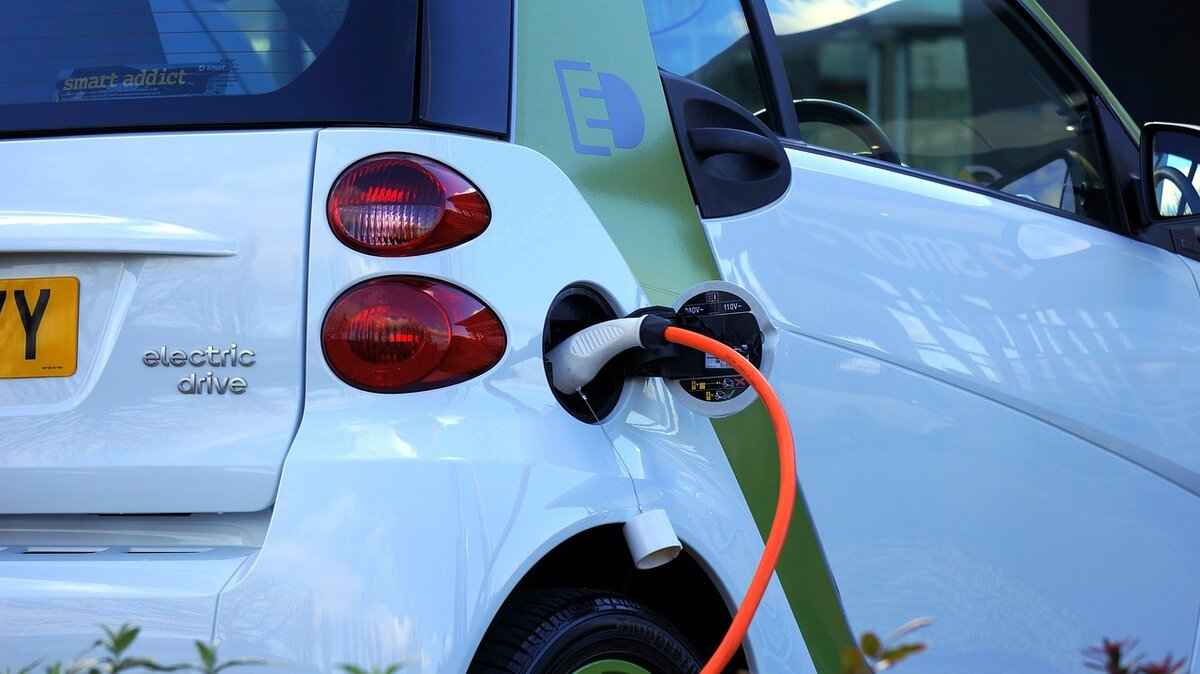
Preventing Future Water Spots
Taking proactive measures can significantly reduce the chances of water spots forming on your vehicle’s surface. By implementing a few simple maintenance tips, you can keep your car looking pristine and protect its paint job from potential damage caused by mineral deposits and hard water. Below are several key strategies to consider for effective prevention.
- Establish a Regular Washing Routine: Regularly washing your car is crucial in preventing water spots. Aim to wash your vehicle at least once every two weeks, or more frequently if exposed to harsh weather conditions or road grime. Use a pH-balanced car shampoo to avoid stripping away protective wax layers.
- Drying Techniques Matter: After washing, always dry your car with a clean, soft microfiber towel. This prevents water from evaporating and leaving mineral deposits behind. For best results, use the “blotting” method instead of wiping, which can cause scratches.
- Apply a Quality Wax or Sealant: A good wax or paint sealant acts as a barrier against contaminants, including water spots. Applying a coat of wax every three months can help protect your car’s finish and make it easier to clean in the future.
- Use a Water Softener: If you live in an area with hard water, consider installing a water softener for your washing needs. This will help reduce the mineral content in the water used to wash your car, subsequently minimizing the risk of water spots.
- Park Wisely: Where you park your vehicle can greatly influence the likelihood of water spot formation. Whenever possible, park in a garage or under a carport to shield your car from rain, sprinklers, and direct sunlight. If parking outside, consider using a car cover for added protection.
- Avoid Parking Under Trees: While trees provide shade, they can also drip sap or leave debris that can lead to water spots and other paint damage. If you must park under a tree, ensure to wash your car more frequently to remove any contaminants.
Conclusion
Incorporating these maintenance tips into your routine can greatly reduce the chances of water spots forming on your car. By establishing a consistent washing schedule, using the right drying techniques, applying protective wax, and choosing optimal parking locations, you can keep your vehicle looking its best for years to come. Remember, prevention is always easier than removal, so take the necessary steps to protect your investment.
Regular Washing and Waxing
Establishing a regular washing and waxing routine is crucial for maintaining the appearance and integrity of your vehicle’s surface. This practice not only enhances the aesthetic appeal of your car but also serves as a protective measure against various environmental factors that can cause damage.
When you wash your car regularly, you effectively remove dirt, grime, and other contaminants that can accumulate over time. These substances can harbor mineral deposits and other harmful elements that may etch into the paint if left unattended. Moreover, frequent washing helps to prevent the formation of stubborn water spots that can be difficult to remove later on.
In addition to washing, applying a high-quality wax creates a protective barrier on your car’s surface. This barrier is essential for repelling water and preventing mineral deposits from settling onto the paint. Waxing not only provides a shiny finish but also acts as a shield against UV rays, bird droppings, tree sap, and other environmental pollutants that can harm your vehicle’s exterior.
To establish an effective washing and waxing routine, consider the following steps:
- Choose the Right Products: Use pH-balanced car wash soap and a quality wax that suits your vehicle’s paint type.
- Frequency: Aim to wash your car every two weeks, with waxing done every three months to maintain optimal protection.
- Proper Technique: Use a microfiber wash mitt and soft towels to avoid scratching the surface during washing and drying.
- Drying: Always dry your car thoroughly after washing to prevent water spots from forming.
By incorporating these practices into your car maintenance routine, you can significantly extend the life of your vehicle’s paintwork. Regular washing and waxing not only keep your car looking new but also help maintain its resale value by protecting it from potential damage.
In summary, a consistent washing and waxing regimen is one of the best investments you can make for your vehicle. It safeguards against mineral deposits and other damaging elements, ensuring that your car remains in pristine condition for years to come. Remember, a little effort in maintenance goes a long way in preserving the beauty and value of your vehicle.
Choosing the Right Parking Location
When it comes to maintaining the pristine appearance of your vehicle, the location where you park plays a crucial role. Many car owners often overlook the impact of parking conditions on their car’s surface, especially regarding the formation of water spots. These unsightly blemishes can occur when water evaporates, leaving behind mineral deposits that can etch into your vehicle’s paint over time. Therefore, understanding how to mitigate this risk is essential for car care enthusiasts.
Why Parking Location Matters
Parking in an open area exposes your vehicle to the elements, including rain, sprinkler systems, and even dew. These factors can contribute significantly to the formation of water spots. When water droplets land on your car’s surface, they can contain minerals and pollutants that, when dried, leave behind stubborn marks. To minimize this risk, consider the following:
- Covered Parking: Whenever possible, opt for parking under a carport or in a garage. This not only protects your car from rain but also shields it from bird droppings, tree sap, and other contaminants.
- Shade: If covered parking isn’t available, look for shaded areas. Trees can provide natural coverage, but be cautious of falling leaves and sap. Parking in the shade reduces direct sunlight, which can help prevent water from evaporating too quickly and leaving behind spots.
- Avoid Sprinklers: Be mindful of your surroundings. Parking near automatic sprinklers can lead to regular exposure to water that contains high levels of minerals. If you notice a sprinkler system nearby, try to find an alternative spot.
Impact of Environmental Factors
Environmental conditions also play a significant role in the likelihood of water spots forming. For instance, in areas with hard water, the mineral content can be higher, increasing the chances of water spots. Additionally, factors such as air pollution can contribute to the buildup of contaminants on your vehicle’s surface. Therefore, understanding the local environment can help you make informed decisions about where to park.
Long-Term Benefits of Strategic Parking
Choosing the right parking location is not just about immediate aesthetics; it can also have long-term benefits for your vehicle’s paint and resale value. Regular exposure to harsh conditions can lead to more than just water spots; it can cause fading, oxidation, and even rust over time. By parking in a safe and secure location, you can preserve your car’s appearance and ensure it maintains its value.
In conclusion, being mindful of where you park your vehicle can significantly reduce the risk of water spots and other forms of damage. By prioritizing covered or shaded areas and avoiding locations near sprinklers, you can keep your car looking its best for years to come.
Frequently Asked Questions
- What are water spots and how do they form?
Water spots are those annoying marks left on your car’s surface after water evaporates, often caused by hard water, rain, or mineral deposits. They can be unsightly and may even etch into your paint if not addressed promptly.
- Can I use vinegar to clean water spots?
Absolutely! Vinegar is a fantastic natural cleaner for water spots. Just mix equal parts of vinegar and water, apply it gently with a microfiber cloth, and watch those spots disappear without scratching your car’s surface.
- How often should I wash my car to prevent water spots?
To keep water spots at bay, it’s best to wash your car regularly—ideally every two weeks. This routine helps remove dirt and grime before they can cause any damage, keeping your car looking shiny and new!
- Are commercial water spot removers effective?
Yes, many commercial products are specifically designed to tackle water spots effectively. Just make sure to follow the instructions carefully to avoid any damage to your car’s finish.
- What can I do to prevent water spots in the future?
To prevent water spots, consider parking your car in shaded areas, regularly washing and waxing it, and using a high-quality car cover when necessary. These steps can help create a barrier against pesky water spots!

